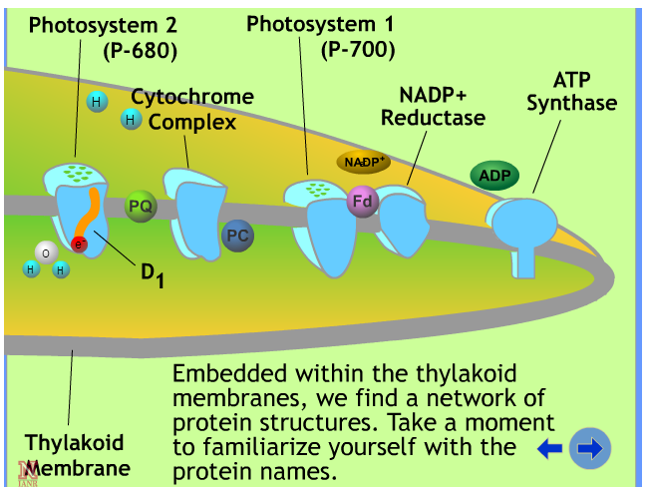Chapter 19: MOA Part 4 – Photosynthesis Inhibitors (Photosystems)
19.3 Importance of the Photosystems
It is estimated that up to half of all the herbicides developed negatively impact electron movement along Photosystem II. Let us explore the vital roles of the photosystems in plant health. Keep in mind the big picture of plants harnessing the energy of sunlight through photosynthesis to produce sugars, which are used in metabolism, growth, reproduction and/or stored for later use if produced in abundance. Chloroplasts are the organelles in plant leaf and stem tissue where this takes place.

When sunlight hits a reaction center in the plant’s chloroplasts, electrons are raised to an excited state and eventually safely used to create ATP (Adenosine triphosphate). ATP provides chemical energy for biochemical processes in plants and animals. In plants, the transfer of electrons from Photosystem II to Photosystem I is essential for the production of ATP. A key step in this electron transfer chain is the reduction of the plastoquinone (PQ) by the D1 protein in the thylakoid membrane in a chloroplast. See this animation for a visual depiction and further description of this process.
Review and Reflection
The D1 Protein

The D1 protein is key in the electron transfer chain where plastoquinone is reduced (electron transferred to it). Herbicides with a mode of action involving this site act as inhibitors of the plastoquinone binding. These herbicides bind to the D1 protein and block the binding of PQ. Inhibiting the binding of PQ interrupts the process of electron transfer, and compromises the synthesis of ATP and NADPH in the chloroplast. This results in the plant’s inability to fix CO2 and produce the nutrients needed for survival. The block in electron transfer also causes an oxidative stress and the generation of radicals, which cause rapid cellular damage. The next section will discuss this in more detail.